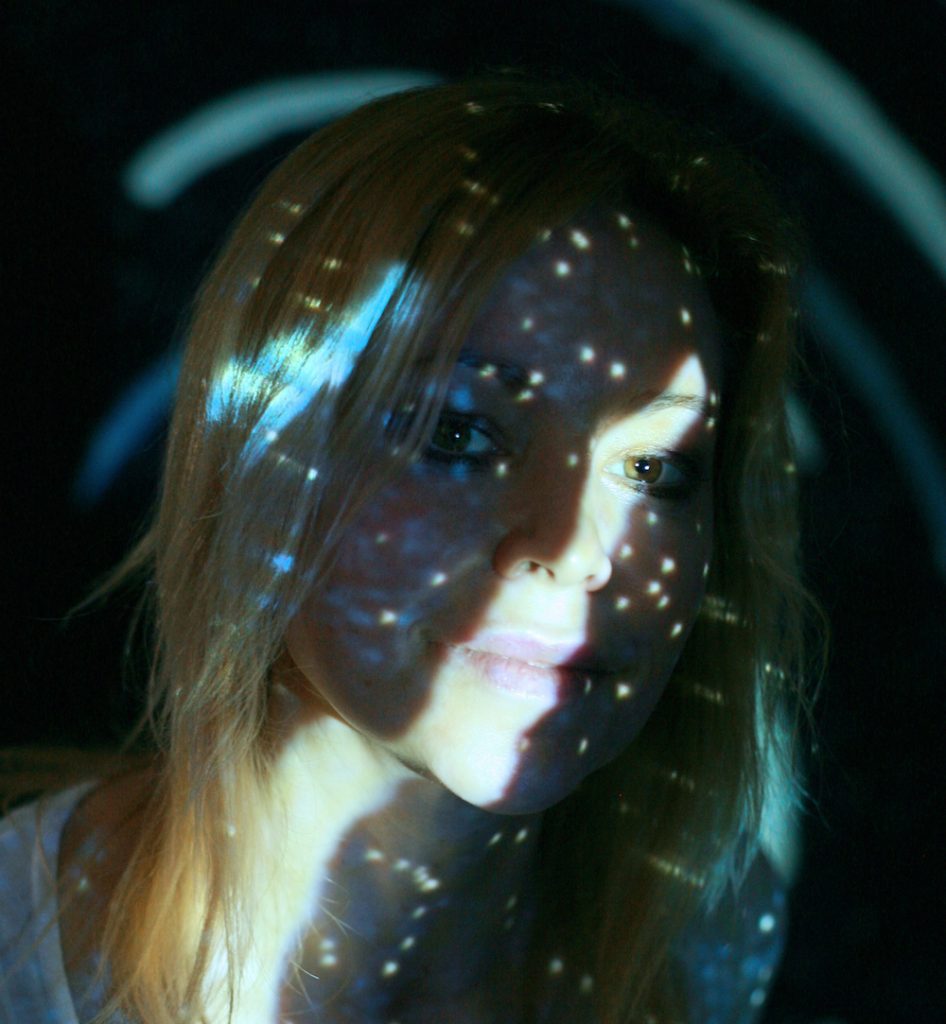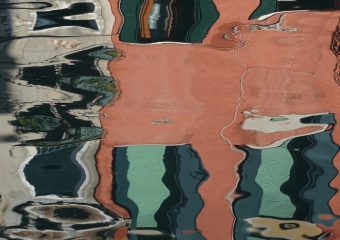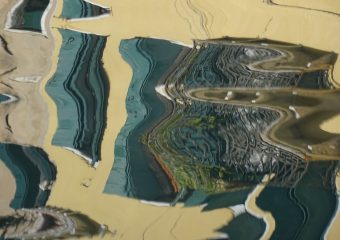Rachel Armstrong (UK) – Meta.Morf 2018 Conference @ Dokkhuset, March 9 – 10, 2018.
See full program here.
A Beautiful Accident
Introduction.
In an emerging ecological era, it is time to step aside the gridlock of mind body dualism and explore new ways of accessing, experiencing and embodying consciousness. By drawing together physical awareness and technological invention with mindful experience, our lived encounters with reality may become richer and more meaningful. We may even increase our receptiveness and capacity to think along with each other.
The fifth Trondheim biennale, Meta.Morf 2018 – A Beautiful Accident, invites us to open up the space between matter and mind, so that we can extrude our being-in-the-world into new spaces. For this, we need new metaphors, technologies and cultural expressions that examine the interconnectedness of the mind with physical reality. Here, we can anticipate how we might live, work and dream – alone and together. A Beautiful Accident therefore explores a range of contemporary portraits of consciousness for the twenty-first century, so that we can consider what we might become in an age of advanced communications, biotechnology and ecosystems in flux. The third millennial cultural landscape is also embracing an era of new materialism, an enlivened material realm where matter no longer needs an external agency to act, but possesses innate vibrancy. Alternative models of consciousness are needed to articulate the relationship between agency, mind and the material realm. Indeed, if our concepts of consciousness are to remain relevant to the significant environmental issues that beset the Anthropocene, our conversations must go beyond the dualistic divide that separates the experience of thought from physical encounters, so that our aspirations and desires are experienced in ways that enhance the liveliness of the planet.
A Beautiful Accident therefore adopts an experimental approach towards the nature of third millennial consciousness. As a concept, the definition is not absolute – but is continually updated by our value systems, so that it can address critical issues of existence relevant to the biggest questions of our time. For example, consciousness invokes notions of our embodiment, identity, relationships with machines, kinship with nonhumans, role in the cosmos and connection with the natural realm. When brought into proximity with technically mediated systems like artificial intelligence, neuroscience, the digital cloud, or extraterrestrial communications, we can potentially shape new relationships between the agents of consciousness. Not all possibilities however, rely on technological breakthroughs but extend into unconventional realms where, for example, transitional substances may occupy in-between states of body and spirit. For example, symbolic ‘data’ can be directly linked through digital computing networks to our lived experiences of the world in smart spaces.
A Beautiful Accident aims to explore nascent possibilities of consciousness – not to close down discussion by finding formal resolutions – such as whether consciousness is produced de novo by the brain – but to open up new conversations by seeking alternative poetics, models, practices, modes of artistic expression, performances and technological developments that question accepted conventions. In an ecological era, we seek coherence between the sensible and cognitive realms, which translate into synergistic relationships with our environment and ecosystems. Perhaps we may even become consciously entangled with planetary systems bringing new relevance to discourses about Gaia, the noosphere, technosphere and Bruno Latour’s (posthuman) Earthbound. Like a phantom, consciousness conjures a tirelessly fascinating realm of existence that slips between immateriality and manifestation. The mind’s massive parallelism, which – from what we know about its physiology – is not only extraordinarily challenging to model, but is also expressed through many media. Moreover, its outputs can be read in many ways, for example, as conversation, body language, ‘bio’ electricity and chemical gradients. Indeed, the actual experiences that we encounter through being in possession of a brain, is rich in contradictions. For starters, it is impossible to be impartial about the very act of thinking. We are enmeshed in evidence that is never entirely objective. While the brain is regarded as a discrete organ that, from an operational perspective, is massively distributed through its entanglements with the body’s sensory system, and its activity is reported through single, subjective, interiorized narratives, it is also not self-referential but responsive to other agents. Perhaps then, with the advent of technological extrusions, intimate communications systems and conversations with nonhumans, we may significantly change the quality of our thoughts, behaviours and notions of identity. What might some of the possibilities be?
One of the most recent challenges in the way that the human mind is understood is through its relationship with the microbiome. This is a resident body of bacterial cells that live within the gut, which produce a whole range of substances that are in chemical conversation with the brain, through nerve cells in the intestine. These bacteria also appear to influence our mood and appetite by releasing molecules into the blood stream. The role of the microbiome in the production of thought therefore challenges the traditional notion of the brain being a hierarchal organized system of information, and starts to suggest an ecology of relationships between human and nonhuman tissues. Discourses then regarding consciousness invite us to consider the possibility of multiple, yet coherently orchestrated, existences that are interwoven with other forms of consciousness, which may not be entirely human. Perhaps the interactions and exchanges with such fundamental agencies might begin to produce recognizable patterns, relationships, or expressions of thought, which are associated with: memory, decision making, creativity, etymology, telepathy, brain implants, communication with other species, bacterial languages, EEG-operated technologies and other modes of cognitive augmentation. These may be further modulated through technological interfaces, our relationships with each other, and digital dreams.
A Beautiful Accident invites us to revisit the ideas that have shaped the nature of consciousness and explore what new developments in the field mean for artistic practice. The program of events helps navigate the frontiers of discovery so that, in consideration of other lively agents, we may better question the nature of our being and begin to articulate what consciousness is in an ecological era. Rashik Parmar discusses how our cities may become even smarter with the advent of Artificial Intelligence systems, while Kevin Warwick explores the impact of neural implants on consciousness. Julie Freeman considers the entanglements between ecology and consciousness, while Susan Stepney discusses how materials ‘compute’ decisions without possessing a central organizing system. Simone Ferracina & Rolf Hughes discuss the Experimental Architecture Group’s work on potentially conscious ‘bricks’ that operate through the metabolisms of microorganisms, and Erin Manning draws our attention to the assumptions made by ‘neurotypicals’ that foreground the world in a particular way. A Beautiful Accident creates a space in which strongly-held preconceptions about the nature of consciousness are challenged, so that we may explore the frontiers of discovery in these challenging and confusing times to coexist with various forms of nonhuman consciousness, and go beyond the interiorized states of self-awareness that are so familiar to us.

Rachel Armstrong is Professor of Experimental Architecture at the School of Architecture, Planning and Landscape, Newcastle University. She is a Rising Waters II Fellow with the Robert Rauschenberg Foundation (April-May 2016), TWOTY futurist 2015, Fellow of the British Interplanetary Society and a 2010 Senior TED Fellow. Rachel is a sustainability innovator who investigates a new approach to building materials called ‘living architecture,’ which suggests it is possible for our buildings to share some of the properties of living systems. She is coordinator for the €3.2m Living Architecture project, which is an ongoing collaboration of experts from the universities of Newcastle, UK, the West of England (UWE Bristol), Trento, Italy, the Spanish National Research Council in Madrid, LIQUIFER Systems Group, Vienna, Austria and EXPLORA, Venice, Italy that began in April 2016 and runs to April 2019. It is envisioned as a next-generation, selectively, programmable bioreactor that is conceived as a freestanding partition made up of standardized building segments, or bricks that confer the structure with programmable elements that draw from the properties of living things e.g. movement, metabolism, sensitivity and growth.


